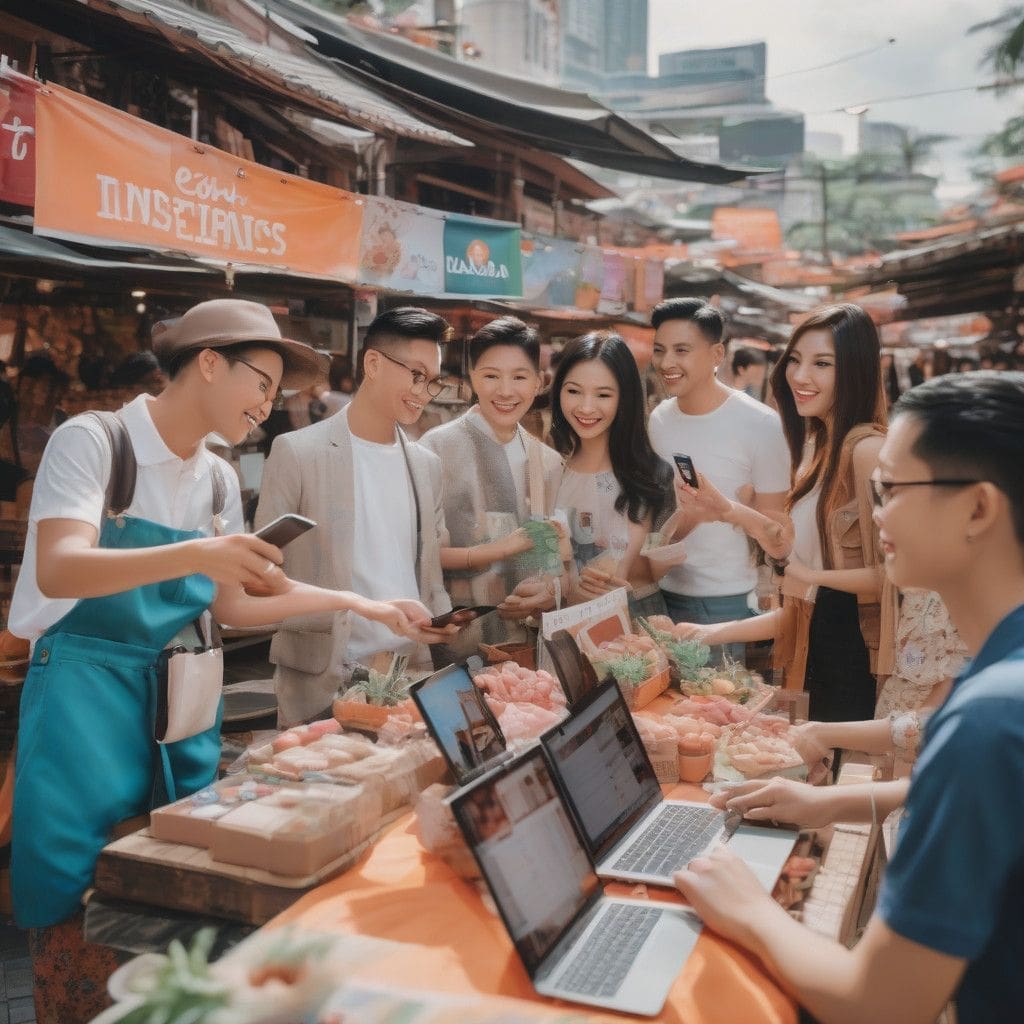A recent report from impact.com and Cube Asia underscores the significant influence of social media personalities on the eCommerce sector in Southeast Asia, particularly in Singapore. The study entitled “E-commerce Influencer Marketing in Southeast Asia” delves into the rapidly changing landscape of online commerce, highlighting the shift toward strategic differentiation driven by innovative platforms and evolving consumer expectations.
The findings draw on a survey involving over 400 adults in Singapore, revealing that YouTube and Facebook are the top platforms for influencer engagement, used by 83% and 80% of respondents, respectively. This trend is consistent across the broader Southeast Asian region, where YouTube’s usage reaches 88% and Facebook at 84%. Notably, mega and macro influencers profoundly affect consumer behavior in Singapore, impacting the purchase decisions of 48% and 46% of respondents, respectively. However, it’s important to note that while influencer recommendations hold sway, Singapore shows a lower rate of influence on purchase recommendations at 67%, compared to 82% across other Southeast Asian nations.
In terms of product categories, influencers have a greater impact on beauty and fashion purchases in Singapore, influencing 57% and 55% of respondents’ decisions as per the survey results. This indicates that brands in the beauty and fashion sectors might benefit significantly from partnerships with influencers who resonate with their target demographics.
Antoine Gross, General Manager for Southeast Asia and India at impact.com, points out that the eCommerce environment in the region is undergoing a transformation that extends beyond just expansion. “Traditional advertising channels are losing their impact,” Gross states, emphasizing the importance of authentic and engaging content provided by influencers. The report reveals a compelling argument that influencers are not only elevating sales of tangible goods but are also central to the success of high-growth sectors like online travel and subscription services.
Among the consumer insights shared, 41% of respondents indicated that they value influencer endorsements when making purchasing decisions. This statistic highlights the potential for brands to enhance their engagement and visibility by strategically aligning with the right influencers. By fostering these relationships, brands can cultivate trust with their target audience, which is particularly vital in a competitive marketplace.
The rise of subscription services marks another significant trend in Southeast Asia, with an impressive 86% of residents accessing at least one service. In Singapore, the Media & Entertainment sector leads this movement, boasting a 67% adoption rate. The influence of social media personalities plays a crucial role here, especially in categories such as News & Literature (86%), Pets (85%), and Health, Wellness & Food (81%).
When looking at the travel sector, Singapore stands out as a leader, with 63% of consumers having made a flight purchase in the past year. Within the same region, accommodation and activity bookings are also popular, with figures reflecting 69% and 56% respectively. Notably, 90% of Singaporean respondents reported purchasing at least one travel-related product within the last year, outpacing the Southeast Asian average of 85%. Such statistics indicate that there is a considerable market for travel brands to tap into influencer partnerships.
Interestingly, the prevalence of live commerce—an emerging trend where products are marketed and sold live through social media—has also gained traction, evidenced by 77% of Singaporean consumers engaging with this format. Although slightly below the Southeast Asian average of 88%, platforms like TikTok and Facebook are leading the way, each utilized by 49% of users. Consumers cited finding good deals and engaging content as primary reasons for their participation in live commerce, highlighting the importance of providing value and entertainment through these avenues.
Additionally, the report’s insights are drawn from comprehensive surveys and interviews with industry experts, providing a solid foundation for understanding the transformation occurring in influencer marketing within the region. It underscores the urgency for brands to pivot their marketing strategies toward influencer collaborations.
Given the data and analysis presented, it is clear that influencer marketing has moved from being a supplementary practice to a core strategy for brands in Southeast Asia. Companies must recognize the potential influencers hold in not only boosting brand visibility but also in directly impacting consumer purchasing behavior.
In conclusion, as the Southeast Asian eCommerce market becomes increasingly competitive, the integration of influencer marketing into overall strategies is no longer optional—it’s essential. Brands that adapt to this shift and engage with the right influencers stand to gain a considerable advantage in attracting and retaining customers in this dynamic marketplace.
